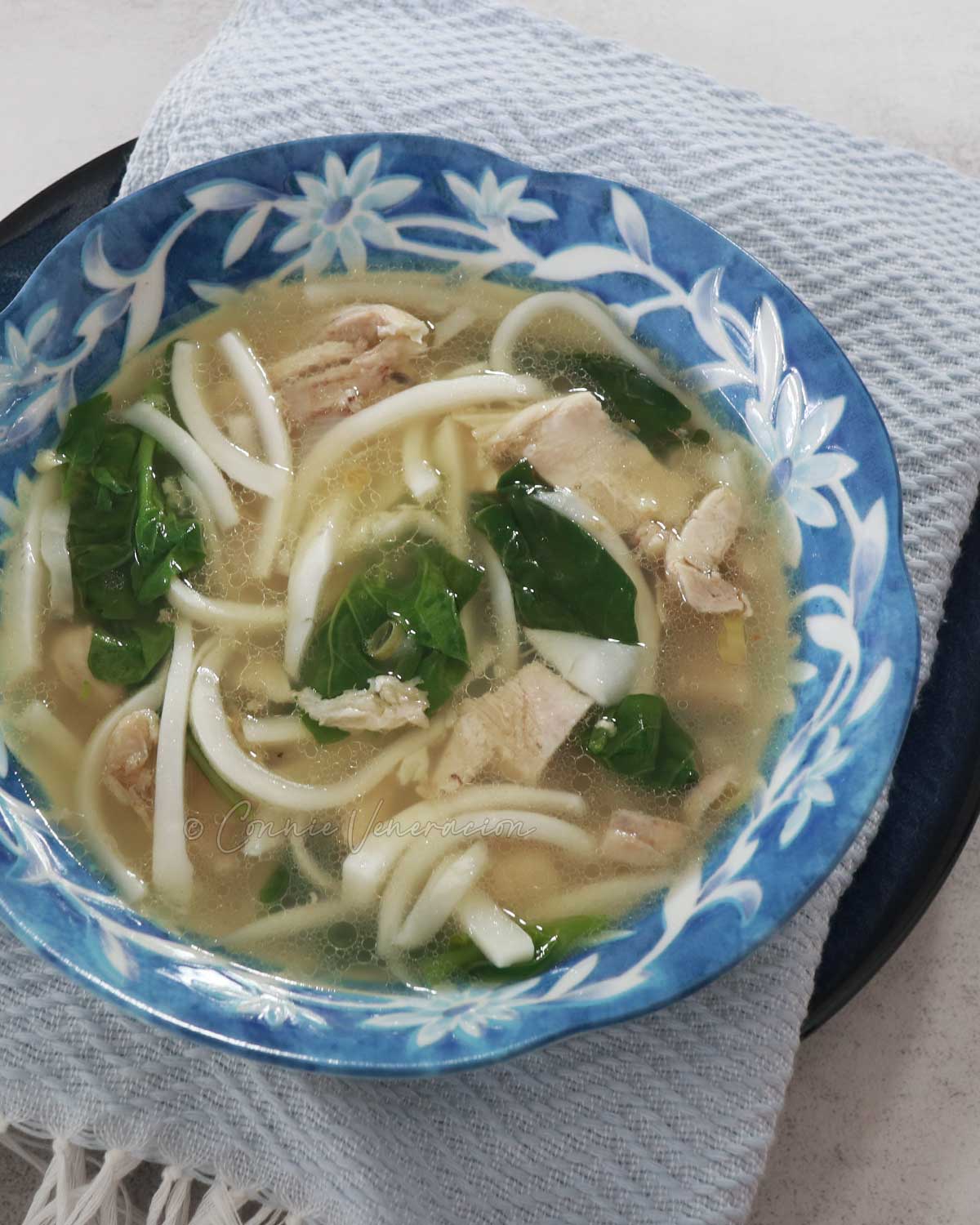It tastes like tinola but it isn’t exactly tinola. The similarity is due mainly to the inclusion of ginger among the ingredients. Chicken binakol is sweeter because the broth is coconut water.
And if we’re to talk about cooking method, the traditional way of cooking binakol is nothing similar to the procedure for cooking tinola. In olden times, binakol was cooked inside a bamboo tube or in a coconut husk over live fire. Cooked that way with the broth, vegetables and chicken soaking up the peculiar flavors of the inside of the bamboo or coconut husk, binakol would probably taste less like tinola.
But I’m guessing. I’ve never cooked in a tube of bamboo nor a coconut husk. And I’m not likely to. I love the modernity of my kitchen and I wouldn’t give up its comforts for the sake of being able to scream authentic! I’ll leave that to the bloody purists. I’m making fun of purists? Always.
But I’m not guessing when I say that binakol is associated with the province of Aklan more than any other place in the Visayas. I’m not guessing either when I say that there are many versions of binakol — some do not have coconut meat, others have coconut milk in the broth, there are versions with green papaya wedges and there are those which do not contain coconut water at all. This is how I cook chicken binakol at home.
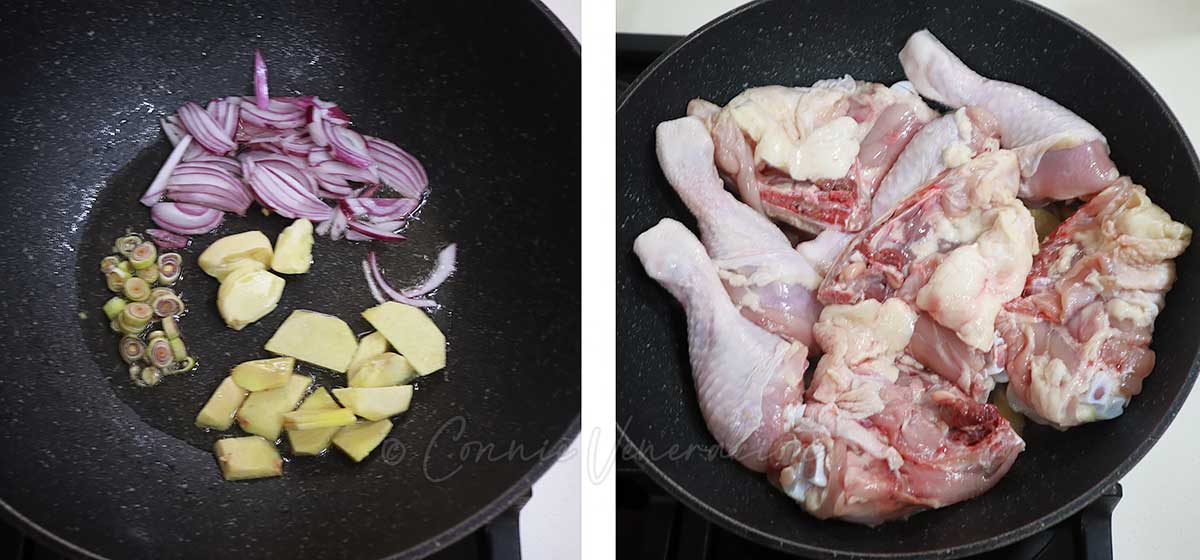
I start by sauteeing shallot, ginger, garlic and lemongrass until aromatic. Bone-in chicken pieces are laid skin side down in the hot oil and left to brown while, at the same time, soaking the flavors of the spices. Why bone-in chicken and not fillets? Because simmering bone-in chicken in coconut water has the effect of combining chicken broth with coconut water. It’s lovely. Meanwhile using fillets and adding chicken broth dilutes the sweetness of the coconut water. And that’s not lovely.
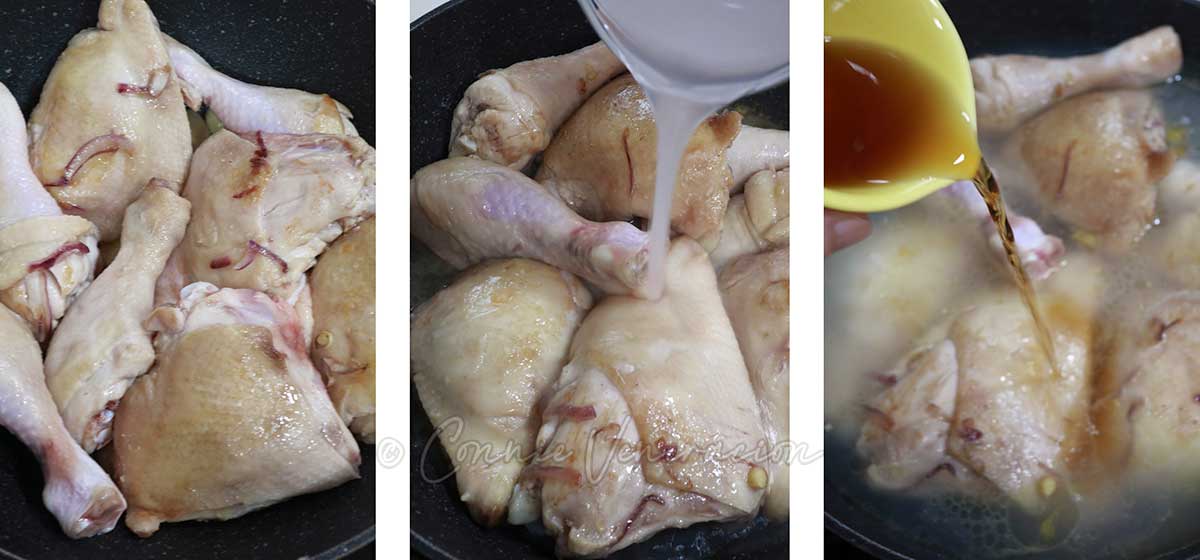
When the chicken skin is lightly browned, I use tongs to flip the chicken pieces over and brown the opposite sides. Why brown the chicken? Two reasons. First, browing minimizes the formation of scum in the broth. Second, for added flavor due to Maillard reaction. If you haven’t heard of the term, just follow that link because I have a whole post dedicated to browning meat.
Once the chicken is sufficiently browned, I pour in the coconut water and fish sauce, bring everything to the boil, lower the heat and simmer until the chicken is tender. How long do I simmer the chicken? It depends on the chicken. Larger and more mature chicken take longer to cook. I used chicken quarters for this recipe and it took them only about 40 minutes to reach the fall-of-the-bone stage.
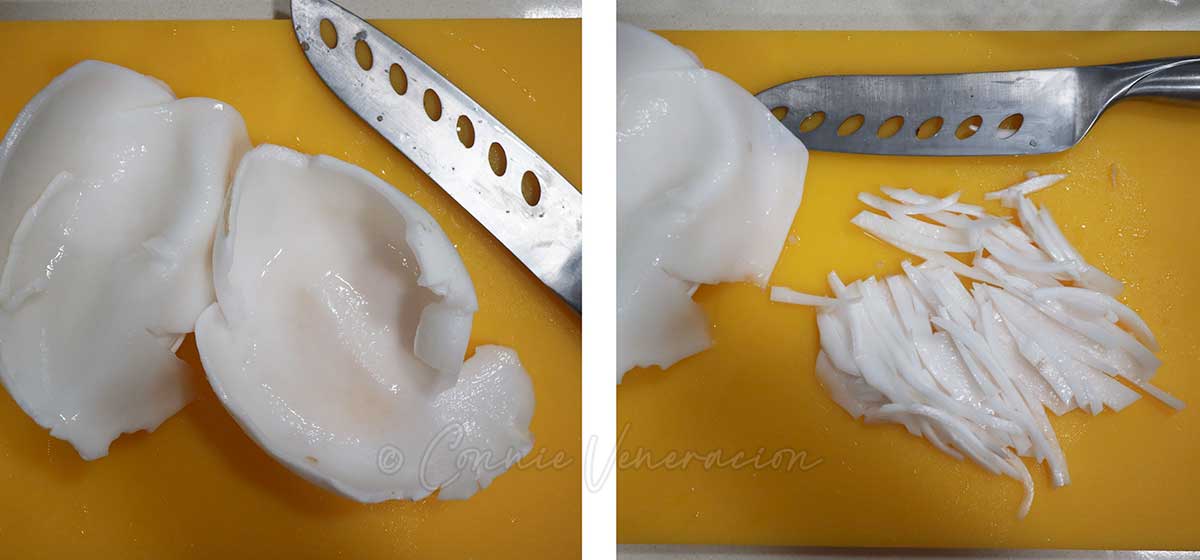
Now, about the coconut. There’s young coconut, there’s mature coconut and there’s coconut that falls somewhere between the two. Young coconut has very thin flesh but the water is so much sweeter. The water from mature coconut is not fit for human consumption. The meat of mature coconut is used for extracting coconut milk and cream, or finely grated and used as garnish for a variety of sweet snacks in Asia. If you need more details, see the post about coconuts.
A guide to coconuts for eating, drinking and cooking
Young and mature coconuts are used differently in cooking. The flesh of young coconuts are soft and sweet. Mature ones have tough flesh that’s best for squeezing coconut milk.
What you want are coconuts with tender but not too thin meat. The meat should be thin enough that it’s not toally opaque. Notice how the yellow cutting board is still discernible in the left photo above. When you eat a piece of coconut meat, it should be firm but not tough. The water from coconuts cracked open at this stage is still sweet and perfect for the broth of chicken binakol.
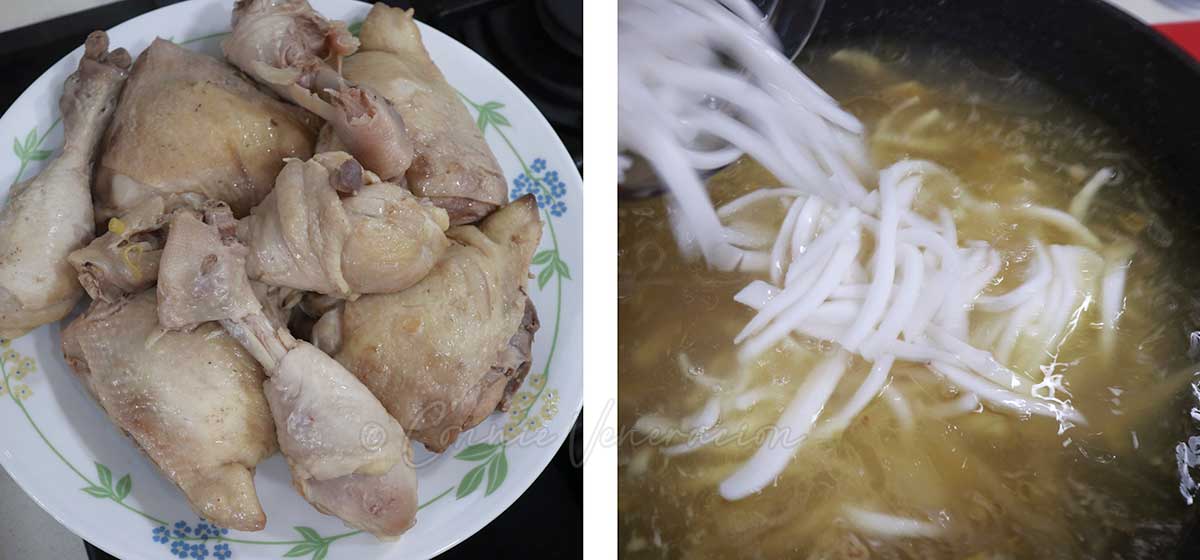
Once the chicken is tender, I scoop them out to allow them to cool a bit. I do it on a plate but if you want to shorten the cooling time, rest them on a rack at least two inches apart. They will cool faster that way. Meanwhile, the coconut meat that had been cut into thin strips go into the still simmering broth. While the chicken cools, the coconut meat is left to simmer in the broth to add more sweetness to it.
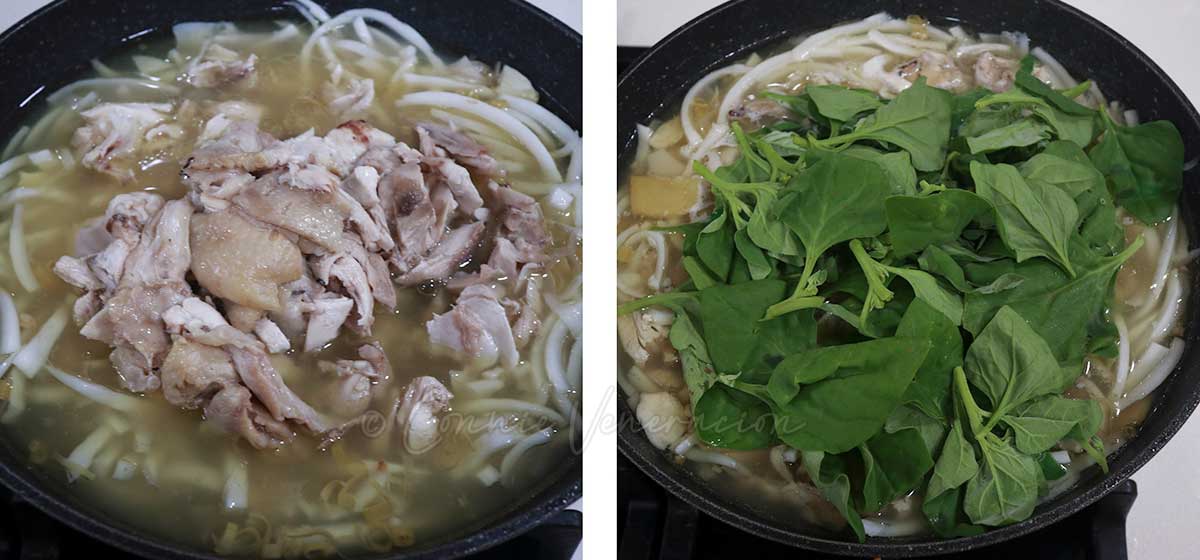
Once cool enough to handle, I debone chicken pieces. I don’t shred the meat. I keep the pieces fairly large. And I don’t remove the skin either. The deboned chicken goes back into the soup and spinach is stirred in. Spinach? Not chili leaves? Yes, spinach. While chili leaves are traditional, they do turn bitter when the soup is reheated. It’s a large pot of chicken binakol that I cooked — enough for two meals so there was bound to be reheating involved. So, yes, spinach and not chili leaves.
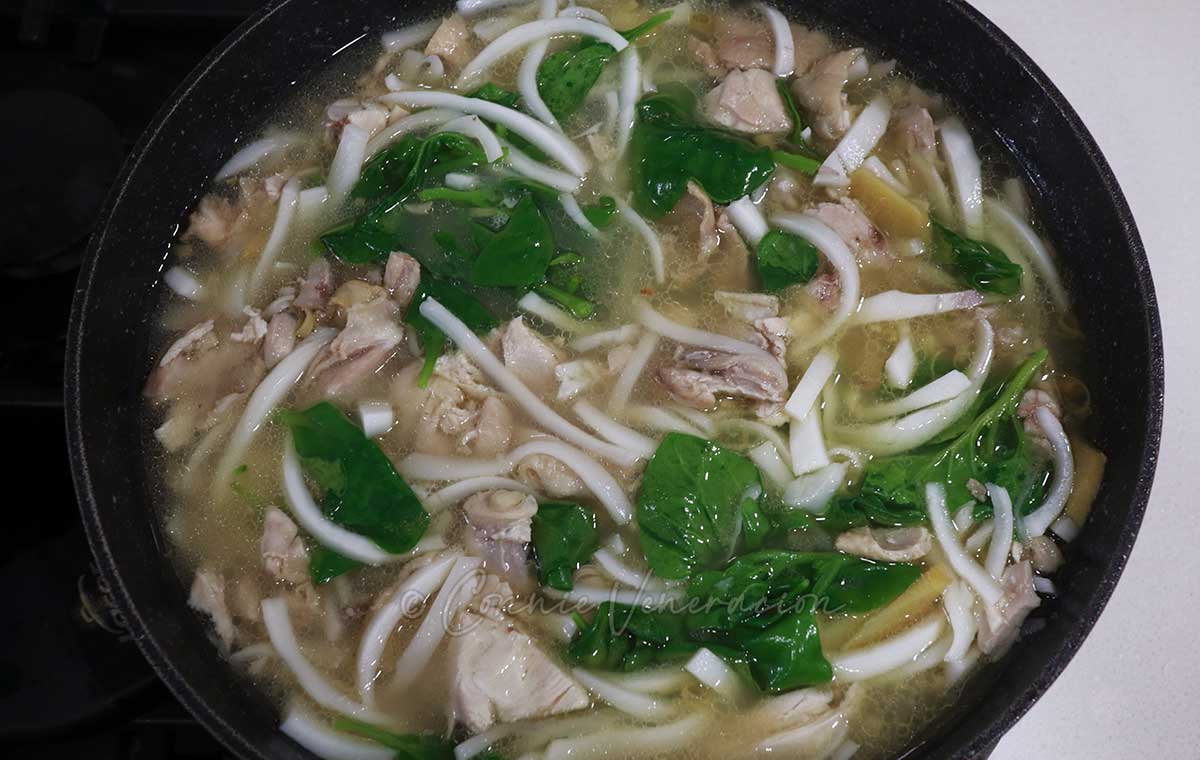
A few more minutes of simmering and the chicken binakol is ready to serve. It’s wise though to taste the broth and adjust the seasonings one last time before bringing the soup to the dinner table. The coconut meat would have sweetened the broth a bit and more fish sauce might be required to balance the flavors.
Chicken binakol
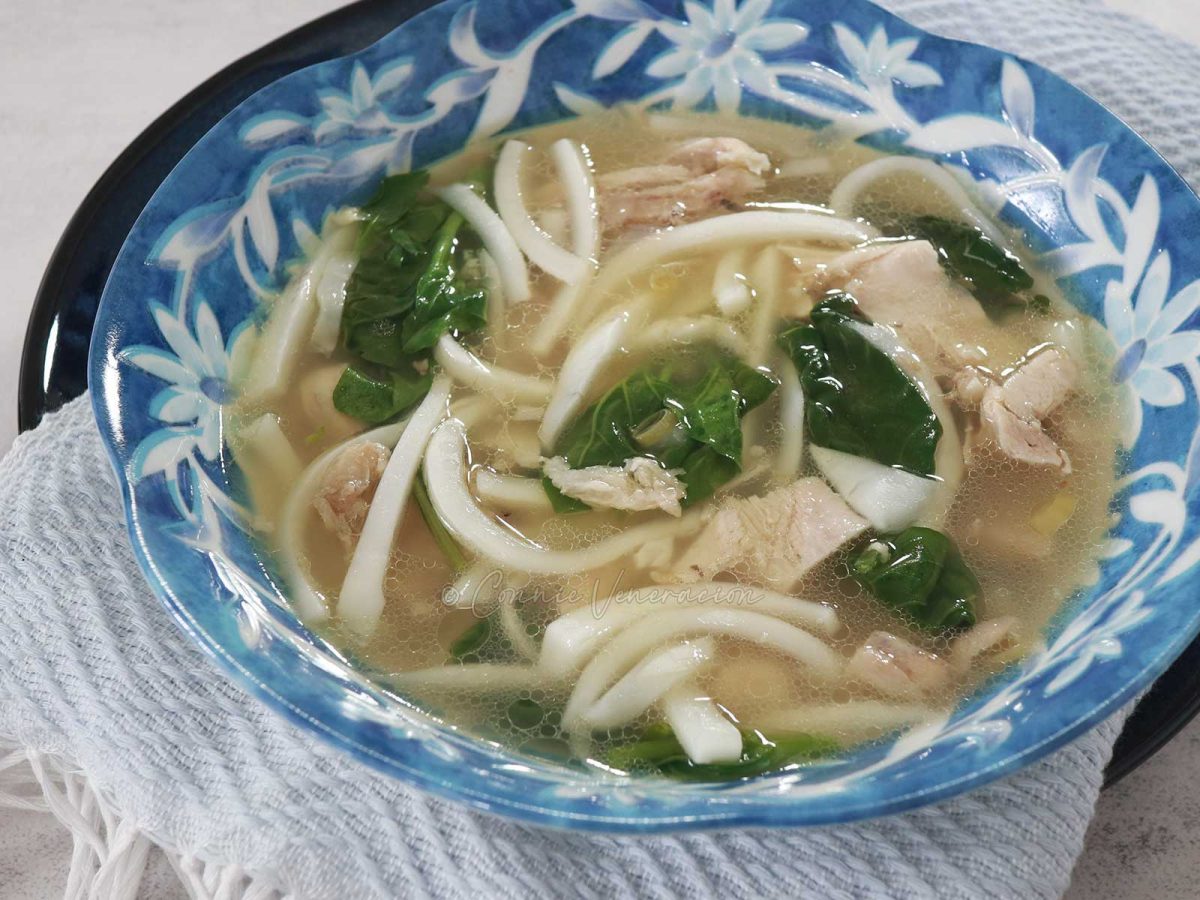
Ingredients
- 1 kilogram chicken leg quarters
- 1 two-inch knob ginger
- 2 stalks lemongrass
- 2 shallots
- 3 to 4 cloves garlic
- 2 tablespoons cooking oil
- 6 cups coconut water from two to three young coconuts
- fish sauce
- coconut meat (from two to three young coconuts) cut into thin strips
- 2 large handfuls spinach
Instructions
- Wipe the chicken leg quarters with paper towels.
- Peel the ginger and thinly slice.
- Measure about six inches from the root ends of the lemongrass, cut and discard the top portions.
- Peel off the discard the tough outer layers of the lemongrass, and thinly slice the tender inner portions.
- Peel the thinly slice the shallot.
- Peel and lightly smash the garlic cloves.
- Heat the cooking oil in a pot.
- Saute the ginger, lemongrass, garlic and shallot until aromatic.
- Lay the chicken pieces, skin side down and leave to brown. Flip over and continue browning.
- Pour in the coconut water and about a quarter cup of fish sauce.
- Bring to the boil, lower the heat, cover the pot and simmer until the chicken meat easily separates from the bones.
- Scoop out the chicken and cool.
- Add the coconut meat to the simmering broth.
- Debone the chicken.
- Add the deboned chicken and spinach to the soup.
- Cover and simmer until the spinach is wilted.
- Taste the broth and add more fish sauce, if needed, before serving your chicken binakol.

